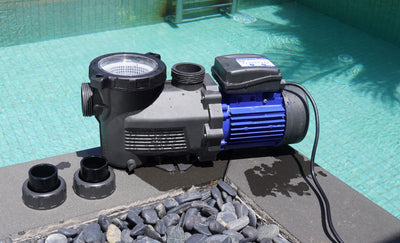
How to Choose the Right Pool Filter for You?
Maintaining crystal-clear pool water relies heavily on an effective filtration system. A good pool filter removes dirt, debris, and even microscopic particles, ensuring a safe and clean swimming environment for you and your family.
There are three main types of pool filters: Sand Filters, Cartridge Filters, and D.E. (Diatomaceous Earth) Filters. Each has its own advantages and drawbacks, and understanding these differences will help you select the best filtration system for your pool.
Sand Filters: A Cost-Effective Choice

Ideal for: Budget-conscious users or those with smaller pools.
Sand filters are among the most common filtration systems. They use specialized filter sand to trap debris, removing particles as small as 7–10 microns. Clean water then flows back into the pool.
Pros:
✔ Affordable upfront cost
✔ Simple design, easy maintenance
✔ Filter sand only needs replacement every 5–8 years
Cons:
✖ Requires regular backwashing (which wastes some water and chemicals)
✖ Less effective at filtering fine particles compared to other types
If you want an economical and low-maintenance option, a sand filter is a great starting point.
Tip: In sand filter systems, besides traditional quartz sand, filter media balls (a specialized alternative) can also be used. These offer several advantages:
✔ Higher filtration efficiency – Their porous structure traps more impurities.
✔ Greater durability – Resistant to wear and corrosion, reducing long-term costs.
✔ Easier backwashing – Their shape allows for better cleaning.
Replacement frequency depends on water quality and maintenance, but they generally last longer than standard sand. Always follow manufacturer guidelines.
Cartridge Filters: High Efficiency, Low Maintenance

Pool Cartridge Filters
Ideal for: Users who want clearer water with less upkeep.
Cartridge filters use pleated filter elements to capture particles as small as 5–7 microns, delivering cleaner water than sand filters. They also have a larger filtration area, improving efficiency.
Pros:
✔ Superior filtration performance
✔ No backwashing needed (saves water and chemicals)
✔ Operates efficiently even at low pump pressure, saving energy
Cons:
✖ Higher initial cost
✖ Cartridges need periodic cleaning and eventual replacement
Cartridge filters work well for both above-ground and in-ground pools, especially for those who prioritize water clarity and convenience.
D.E. Filters: The Finest Filtration Available
Ideal for: Users who demand the highest water quality.
D.E. filters use diatomaceous earth—a fine powder made from fossilized algae—to coat filter grids, trapping particles as tiny as 1–3 microns. This results in exceptionally clear water.

Diatomaceous Earth for Pools
Pros:
✔ Best filtration performance (removes nearly invisible particles)
✔ Ideal for high-usage pools or sensitive swimmers
Cons:
✖ Requires frequent maintenance (backwashing and D.E. powder replenishment)
✖ Filter grids need periodic deep cleaning and replacement if damaged
✖ D.E. powder dust can be harmful if inhaled (handle with care)
Despite the extra maintenance, D.E. filters deliver the purest swimming experience.
Comparison Summary
| Filter Type | Filtration Precision | Maintenance Level | Cost | Water Quality |
|---|---|---|---|---|
| Sand Filter | 7–10 microns | Moderate | Low | Good |
| Cartridge Filter | 5–7 microns | Low | Medium | Very Good |
| D.E. Filter | 1–3 microns | High | High | Excellent |
When choosing a pool filter, consider your budget, maintenance preferences, and water quality expectations. Each type offers a different balance of cost, upkeep, and performance.
At AQUASTRONG, we provide filtration solutions for all pool types. Whether you prioritize efficiency, energy savings, or premium water clarity, we have the right product for you.


